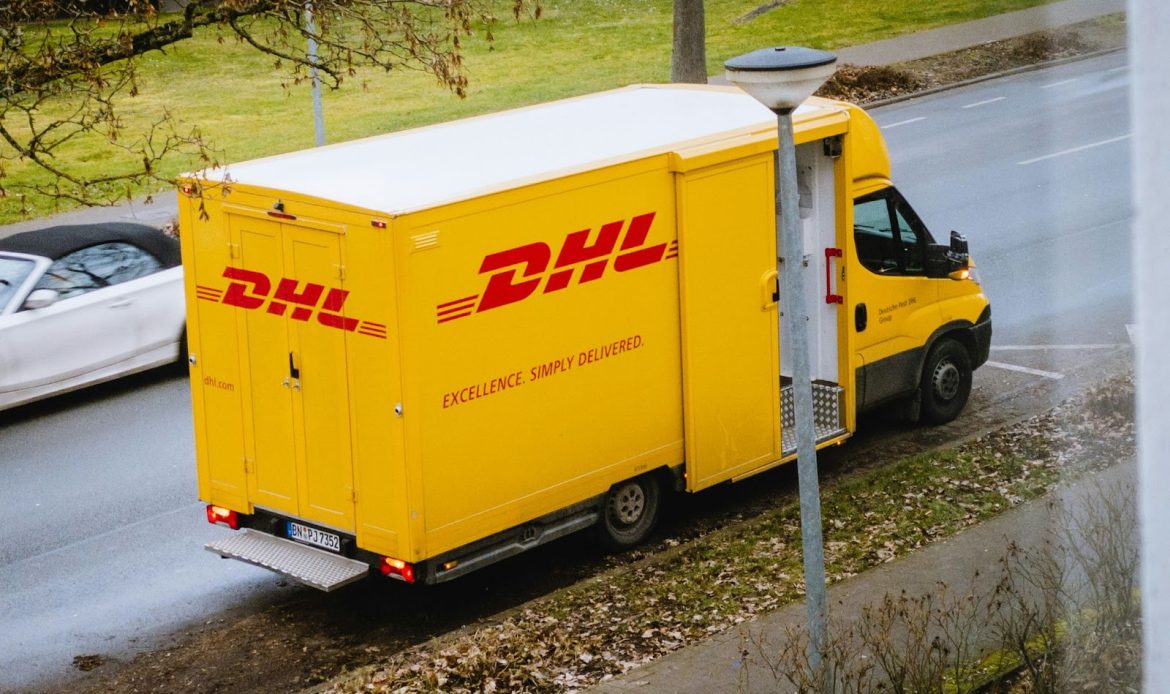Article Summary:
- UK 3PLs reduce fulfilment costs by 20-35% through volume shipping rates and variable pricing
- Post-Brexit bulk import cuts per-order costs by £20+ for EU brands selling to UK customers
- Next-day delivery to 95% of UK postcodes with 99%+ pick accuracy as standard
- Real-time platform integrations prevent overselling across multiple channels
- Variable costs eliminate fixed warehouse overheads and absorb seasonal peaks
- Professional returns handling improves repeat purchase rates by 70%
- B Corp-certified providers offer renewable energy, recyclable packaging, and carbon reporting
- Brands shipping 500+ monthly orders see immediate ROI from outsourcing
Your current 3PL missed another dispatch deadline last week. The one before that, they couldn’t explain why 200 units showed “in stock” on your dashboard but weren’t physically there. When you called your account manager about it, you got a ticket number and a 48-hour response window.
You’re handling 1,200 orders a month; you’ve outgrown the DIY stage and now need a logistics partner who actually picks up the phone, treats your Q4 peak like it matters, and doesn’t bury surprise storage fees in the fine print.
Or maybe you’re still running fulfilment in-house with a small team. It worked at 500 orders monthly, but at the current volume, your warehouse manager is spending more time firefighting courier issues than planning for next quarter’s growth. You’re hitting the ceiling where “managing it ourselves” stops being control and becomes a bottleneck.
Either way, you’re weighing up a move to a UK-based 3PL – or a switch to a better one. The question isn’t whether outsourcing makes sense anymore. It’s which partner will actually deliver on the promises, and whether the advantages are real or just rephrased sales copy.
They’re real. But only if you choose the right provider and know what to push on. Here’s what a properly run UK 3PL actually gives you.
What Is a UK 3PL?
A 3PL (third-party logistics provider) runs order fulfilment as a service. You send stock to their warehouse. They store it, pick and pack orders as they arrive from your sales channels, and hand parcels to carriers for delivery. Most handle returns, subscription kitting, and B2B orders too.
The UK part matters because location drives everything in eCommerce logistics. A UK warehouse means next-day delivery to 95% of UK postcodes. It means domestic carrier rates instead of international shipping fees. For EU brands selling here post-Brexit, it eliminates the customs friction that kills conversion rates.Third-party fulfilment UK providers typically integrate with Shopify, Amazon, WooCommerce, and other platforms. Orders flow automatically. Stock levels sync in real time. You get visibility without needing warehouse staff reporting to you directly.

Lower Costs Through Scale and Smarter Operations
The biggest misconception about 3PLs is that you’re paying someone else to do what you could do cheaper yourself. The numbers prove otherwise. Between carrier rate negotiations, variable cost structures, and eliminated overheads, most brands reduce total fulfilment costs by 20-35% when they move to a professional 3PL warehouse UK.
Negotiated Shipping Rates You Can’t Match Alone
A 3PL warehouse UK ships thousands of parcels daily. Carriers offer them volume rates that individual businesses, even successful ones, can’t access.
Here’s what that looks like in practice:
| Monthly Orders | Direct Carrier Rate | 3PL Negotiated Rate | Monthly Saving | Annual Saving |
| 500 | £4.50 | £2.80 | £850 | £10,200 |
| 1,000 | £4.20 | £2.60 | £1,600 | £19,200 |
| 2,500 | £3.80 | £2.40 | £3,500 | £42,000 |
These figures reflect typical DPD or Evri rates for standard parcels under 2kg, and the savings grow larger for heavier items or premium services like tracked delivery.
You’re also not locked into one carrier. 3PL providers UK work with multiple networks and route each order to the best option for speed and cost. A parcel to Edinburgh goes Royal Mail. A next-day to London goes DPD. You don’t negotiate contracts or juggle account managers. The 3PL does that.
No Fixed Warehouse Overheads
Running your own warehouse means rent, rates, utilities, insurance, and equipment, whether you ship 500 orders or 5,000. Staff costs are mostly fixed too, you can’t hire 0.3 of a warehouse operative for a quiet month.
A UK 3PL flips this to variable costs. You pay for the storage space you use, the orders you fulfil, and the shipping you generate. Quiet January after a peak December? Your bill drops. Launching a new product line that doubles volume? You scale without signing a bigger lease or recruiting temps in a panic.
This is particularly valuable for brands with seasonal spikes, like fashion retailers that do 60% of annual revenue in Q4 aren’t paying for 12 months of warehouse capacity; they only need it for eight weeks. The 3PL absorbs that peak across its wider client base.
Post-Brexit Savings for EU Sellers
If you’re shipping from the EU to UK customers order-by-order, you’re paying duty, VAT processing, brokerage, and extended linehaul on every parcel. Delivery times stretch to 7-10 days. Customers get hit with surprise fees at the door, and conversion rates tank.
Working with a UK 3PL reverses the economics. You bulk-import stock once (single customs clearance), warehouse it in the UK, then distribute domestically. Delivery drops to 1-2 days. Per-order costs can fall by £20 or more when you factor in eliminated brokerage, faster shipping, and avoided cart abandonment from customs friction.
EORI and VAT registration are sorted up front. Your 3PL handles documentation. Your customers never see a customs delay. For EU brands entering the UK market, this infrastructure is the difference between viable and non-viable customer acquisition costs.
The same logic applies in reverse for UK brands wanting to serve EU customers post-Brexit. Many 3PL services UK now operate fulfilment centres in the Netherlands or have partnerships allowing you to stock in-market and avoid cross-border friction entirely.
Faster Delivery Across the UK
UK buyers expect next-day delivery as standard now, not premium. If you’re shipping from a single location and your warehouse is in the wrong part of the country, you’re already behind on speed.
Most 3PL services UK offer:
- Same-day dispatch for orders placed before 2pm or 3pm cut-offs
- 99%+ pick accuracy using RF scanning and quality checks
- Next-day coverage to 95%+ of UK postcodes
- Multi-carrier networks to optimise speed and cost by destination
Faster delivery improves conversion rates at checkout because customers trust you’ll deliver on the promise, reduces cart abandonment, and directly impacts repeat purchase rates. Customers who receive orders within 24 hours are measurably more likely to buy again.
Delivery speed also reduces “where is my order?” queries, with WISMO tickets dropping naturally when dispatch is consistent and tracking updates are automatic. That means less strain on your customer service team and fewer negative reviews citing slow shipping.

Technology That Keeps You in Control
You’re outsourcing fulfilment, not visibility. A good 3PL gives you the same real-time access to inventory and orders that you’d have running your own warehouse, but without the operational burden.
Expect integrations with Shopify, Amazon, WooCommerce, eBay, and other platforms. Orders sync automatically. Stock levels update across all channels in real time, preventing overselling. You can pull reports on order history, return rates, inventory turnover, and carrier performance whenever you need them.
Pick Accuracy That Actually Matters
Better 3PL providers UK use RFID or RF scanning technology, which drives pick accuracy above 99%. Every item gets scanned at receipt, at pick, and at dispatch. Fewer mis-picks mean fewer customer complaints, fewer replacement shipments, and less time dealing with errors that shouldn’t have happened.
What Good Platforms Include
- Low stock alerts so you can reorder before stockouts
- SKU performance data showing which products move fastest
- Returns analytics breaking down reasons and condition grades
- B2B and D2C order separation if you’re selling through both channels
This visibility matters when you’re not physically in the warehouse. You need to trust the data in the system. Providers with strong tech infrastructure give you that confidence.
Flexibility to Scale Without the Growing Pains
eCommerce growth is rarely linear. You’ve got seasonal peaks (Q4, Mother’s Day, Valentine’s), product launches, PR moments that spike demand, and the occasional TikTok video that moves 800 units in two days.
Variable Capacity Without the Pain
A UK 3PL absorbs those swings without you needing to solve for warehouse space or temporary labour. Need to double your storage in October for Christmas stock? Done. Back to baseline in February? Your costs drop accordingly.
You’re not locked into capacity you can’t fill or scrambling to rent overflow space during peak.
Geographic Expansion Made Simple
This flexibility extends to expansion, too. Adding a new sales channel? Your 3PL integrates it. Launching in Europe or testing the US market? Many UK 3PLs have EU facilities (particularly in the Netherlands) or US partnerships.
You’re not rebuilding fulfilment infrastructure every time you grow into a new market.
Critical for Subscription Brands
Month one, you’re fulfilling 300 boxes. Month twelve, you’re at 4,000. A 3PL scales with you. In-house operations would require you to hire, train, and equip a team at exactly the point where your focus should be on product and retention, not logistics capacity.
Focus on What Actually Grows Your Business
Fulfilment doesn’t grow revenue. Product development, marketing, customer acquisition, and retention do.
Time Back for Strategic Work
Every hour your ops manager spends negotiating courier rates or solving a mis-pick issue is an hour not spent on strategic work. Every morning, your founder starts by checking if yesterday’s orders went out is not a morning spent on positioning, partnerships, or product roadmap.
A UK 3PL takes fulfilment off your plate entirely. You’re not managing warehouse staff, dealing with courier account managers, or firefighting stock discrepancies.
That time flows back into work that compounds: building better products, creating content that converts, improving customer experience, or planning the next stage of growth.
Valuable for Purpose-Led Brands
If you’re building an organic skincare line or sustainable homeware business, your competitive advantage is in formulation, sourcing, and brand story, not logistics operations. Handing fulfilment to specialists lets you invest time where your expertise actually differentiates you.
Partnership, Not Execution
A good 3PL doesn’t just execute. They advise.
They’ll flag when your packaging dimensions are costing you unnecessarily in courier surcharges. They’ll suggest kitting options that improve your average order value. They’ll tell you when your reorder timing is off and you’re at risk of stockouts.
That’s the difference between a vendor relationship and a partnership. You want the latter.

UK-Specific Advantages You Can’t Ignore
Post-Brexit logistics have changed the game for cross-border eCommerce, and local UK fulfilment solves problems that didn’t exist five years ago.
Post-Brexit Compliance Without the Headache
Selling to UK customers from outside the UK post-Brexit means navigating EORI registration, VAT setup, commodity codes, and Incoterms. Get it wrong and shipments sit in customs, get returned, or hit customers with unexpected fees that destroy your brand reputation.
A UK 3PL has done this hundreds of times. They handle bulk import customs clearance, manage your EORI and VAT registration, and ensure correct documentation. Your stock clears customs once imported, then moves domestically with zero per-order friction.
This is particularly valuable for EU brands entering the UK or UK brands maintaining EU presence. Customs complexity is no longer your problem. It’s managed by someone whose entire business depends on getting it right.
Returns Handling That Protects Your Reputation
UK return rates average 20-30% for fashion, 15-20% for beauty and wellness. January sees return volumes double (the “Returnuary” effect). Managing that flow in-house means receiving returns, inspecting condition, making restock decisions, updating inventory, processing refunds, and handling exchanges.
Third party fulfilment UK services do this daily at scale. Returns arrive at the warehouse, get triaged by condition (A-grade resalable, B-grade outlet, C-grade recycle/dispose), and flow back into your inventory systems automatically. Refund process faster. Stock re-enters circulation quicker. Customers get better experiences.
Fast returns handling directly impacts repeat purchase rates. Customers who had a smooth return experience are 70% more likely to buy again. Slow, painful returns processes, common when brands handle them ad hoc, destroy lifetime value.
A good 3PL will also provide returns analytics: why items came back, condition grades, and which SKUs have higher return rates. That data feeds back into your product development and quality control processes. It’s not just operational. It’s strategic.
Sustainability Through Local Operations
Shipping from a UK warehouse to UK customers cuts transport miles compared to cross-border fulfilment. Stock that would’ve crossed borders multiple times now moves once domestically, reducing carbon emissions per order.
Many 3PL services in the UK also offer:
- Recyclable or compostable packaging materials (sugarcane mailers, paper tape, cardboard void fill)
- Paperless dispatch processes (eliminating millions of printed packing slips annually)
- Renewable energy in warehouses (solar panels, green energy tariffs)
- Optimised carrier routing to reduce empty miles and consolidate shipments
B Corp-certified 3PLs embed sustainability into operations rather than treating it as an add-on. For brands with environmental values, and increasingly, this is most DTC brands, fulfilment partner alignment matters. Your customers care where their orders come from and how they’re packed. A sustainable 3PL lets you extend your brand values through the entire customer journey.
Some providers will even give you monthly carbon reports showing emissions per order, allowing you to offset or communicate impact transparently. That’s not possible when you’re managing logistics in-house without dedicated sustainability resources.
Is a UK 3PL Right for Your Business?
You’re likely ready to outsource or switch providers when you hit these markers:
Volume thresholds:
- 500+ orders per month where 3PL economics make clear sense
- 1,000+ orders where in-house operations become a distraction from growth
Operational complexity:
- 50+ SKUs make manual inventory management error-prone
- Multiple sales channels (own site, Amazon, B2B) requiring a unified stock view
- International expansion plans (UK to EU, or EU to UK)
Time and focus:
- Fulfilment consuming 15+ hours weekly from key team members
- Peak season stress is causing dispatch delays or service failures
- Returns volumes are increasing and overwhelming your process
Growth stage:
- Scaling past founder-led operations into a proper team structure
- Fundraising or acquisition conversations where logistics efficiency matters
- Planning geographic or channel expansion in the next 12 months
You don’t need tens of thousands of orders to benefit. Mid-sized brands gain the most: big enough to need professional systems, small enough to value partnership and responsive support over enterprise-scale pricing.
Choosing the Right Partner
Not all 3PL providers UK are equal. Some will take your business and treat you like account number 247. Others will partner with you properly. Here’s what separates them:
- Transparent pricing with no hidden fees: Look for clear per-order fulfilment costs, storage rates, and shipping. Ask about peak season surcharges, long-term storage fees, and minimum monthly spends. If they won’t give you straight answers, walk away.
- Platform integrations that actually work: Direct connections to your sales channels, not CSV imports. Real-time stock syncing, not end-of-day batch updates. API access if you’re running custom systems.
- SLA guarantees in writing: What’s their same-day dispatch rate? What’s their pick accuracy? What happens when they miss targets? Good providers will commit to 99%+ accuracy and 99%+ same-day dispatch, with service credits if they fail.
- Responsive support, not ticket systems: Dedicated account managers who know your business. Phone numbers that get answered. Proactive communication during peaks, not reactive firefighting.
- Values alignment, particularly on sustainability: Staff retention rates (high turnover = inconsistent quality). B Corp certification or equivalent. Transparent reporting on packaging waste and carbon impact.
- Proven peak performance: Ask how they handled Q4 last year. Request client references. Check if they scaled successfully during Black Friday without service degradation.
Request pricing comparisons based on your actual volumes. A good 3PL will model your costs at current volume, 50% growth, and 100% growth scenarios. They’ll show you where economies kick in and where you might hit pricing tiers.
Don’t just look at the cheapest option. Look at total cost: fulfilment fees plus shipping plus error rates plus time saved. A slightly higher fee that comes with 99.9% accuracy and responsive support is almost always better value than rock-bottom pricing with 95% accuracy and ticket-only support.
So Should You Make the Switch?
A UK-based 3PL reduces your per-order costs through negotiated carrier rates, speeds up delivery to 1-2 days across the UK, absorbs seasonal volume swings without capital investment, and frees your team to focus on growth activities instead of operational firefighting.
For brands doing 500+ orders monthly, the advantages are measurable and immediate. For brands doing 1,000+, staying in-house or sticking with an underperforming 3PL is actively limiting growth.
The question isn’t whether to outsource. It’s when, and to whom. Choose a partner that matches your values, backs claims with data, provides transparent pricing, and treats your brand like it matters. That’s where sustainable growth lives, and where your kitchen table stays a kitchen table.




